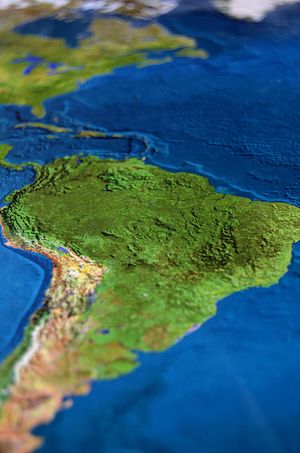Latin America has gone through numerous stages of engagement with external actors during its independent history. For much of the 19th and 20th centuries, the region remained intrinsically linked to Europe and the United States. This equation has changed dramatically in a multi-polar 21st century: Latin America today has been courted by numerous external actors, from Beijing and Tokyo to New Delhi and Tehran. None, however, has left more of an impact than China, which has quickly become South America’s largest trading partner, Latin America’s most important lender – more than the World Bank, Inter-American Development Bank, and the CAF Development Bank combined – and among the chief foreign investors.
Today, China and the United States jockey for influence in Latin America. Nearly all of South America (with the exception of Colombia and Ecuador) trades more with China than they do with the United States; Mexico, Central America, and the Caribbean (with the exception of Cuba) all trade more with the United States than they do with China. In the political and diplomatic arena, in the last 15 years Beijing has managed to get five Latin American countries – Costa Rica, the Dominican Republic, El Salvador, Nicaragua, and Panama — to switch official diplomatic recognition from Taiwan to the People’s Republic of China. The three Latin American countries that currently face U.S. sanctions – Cuba, Nicaragua, and Venezuela – have been met with open arms by China, which has supported them with loans, military support, and investment.
The COVID-19 pandemic has further heightened fears of a prolonged contest between the United States and China, which may play out through economic warfare, sanctions, and trade wars. As Brazilian economist Otaviano Canuto notes, “the future looks uncertain. Latin America is caught between two major global forces that threaten the region’s growth: a potential drop in capital flows from the U.S. as pandemic stimulus tapers off; and decreasing growth in China, where an energy crunch is hitting just as the country’s exhausted property markets begin to go into reverse.” The supply chain crises following the COVID-19 pandemic and Russia’s invasion of Ukraine have added more layers of uncertainty, with rising commodity prices, supply shortages, and international sanctions all causing more volatility in global trade.
At such uncertain times, an argument could be made for Latin America to hedge its bets and reduce risks by diversifying its international exposure. India may provide just the right opportunity, at the right time. In IT, pharmaceuticals, and automobiles, India maintains an edge over China in the Latin American region.
India is a global IT giant and faces little to no competition from China in this space. In pharmaceuticals, Indian companies have consistently exported more finished pharmaceuticals products to Latin America than China has throughout the 21st century; these companies also invest more in the Latin American region than China does. Yet, during the COVID-19 pandemic, it was China (not India) that supplied the majority of the region’s vaccines. In fact, China may soon race ahead of Indian pharmaceutical companies in the Latin American region given that the Chinese government has prioritized the biopharmaceuticals sector as a “key industry.”
In the automobiles space, India competes head-on with China in Latin America: India exports far more cars to the region than China does, but China supplies more motorbikes and auto parts. Indian automobiles and auto parts companies also invest a near-equal amount as China does in the Latin American region.
Still, in most other facets, China operates in another league altogether. In terms of overall investment, trade, or loans, China’s presence in Latin America is far ahead of India’s.
Yet, India remains an important partner for the Latin American region. While China receives far more political and diplomatic attention in the region, India’s rather benevolent presence has garnered much goodwill in Latin America. Unlike China, India is a democracy, and it faces similar challenges common to Latin America as well, such as coalition governments, a rigid bureaucracy, political corruption, and frequent protests. India’s economic growth has also caught the attention of Latin American countries, which have recalibrated India into their foreign policy priorities as a key player in Asia.
| India-Latin America | China-Latin America | |
| Diplomacy | Economic | Multi-faceted |
| Diaspora | ~25,000 people | ~3.5 million people |
| Trade | $30-50 billion | $250-300 billion |
| Investment | $12-16 billion | $159 billion |
| Loans | Less than $1 billion | ~$136 billion |
| Latin American investment | In India: $1.5 billion |
In China: $1 billion |
| Centers of Latin American studies | In India: 8 |
In China: 65 |
This affinity and goodwill have led to more high-level political visits between India and Latin America, despite the absence of a clear foreign policy to prioritize the other (as is the case with China). There have also been more people-to-people exchanges, with joint collaborative efforts among artists, filmmakers, musicians, and academics, who benefit from the complementarities between India and Latin America. Although business and economic diplomacy will continue to be the principal drivers of India-Latin America relations, it would be beneficial for governments on both sides to provide more incentives to deepen people-to-people exchanges.
This article is part of the report “Latin America’s Tryst With The Other Asian Giant, India” by The Wilson Center’s Latin American Program and was published in Spanish by Reporte Asia.

































